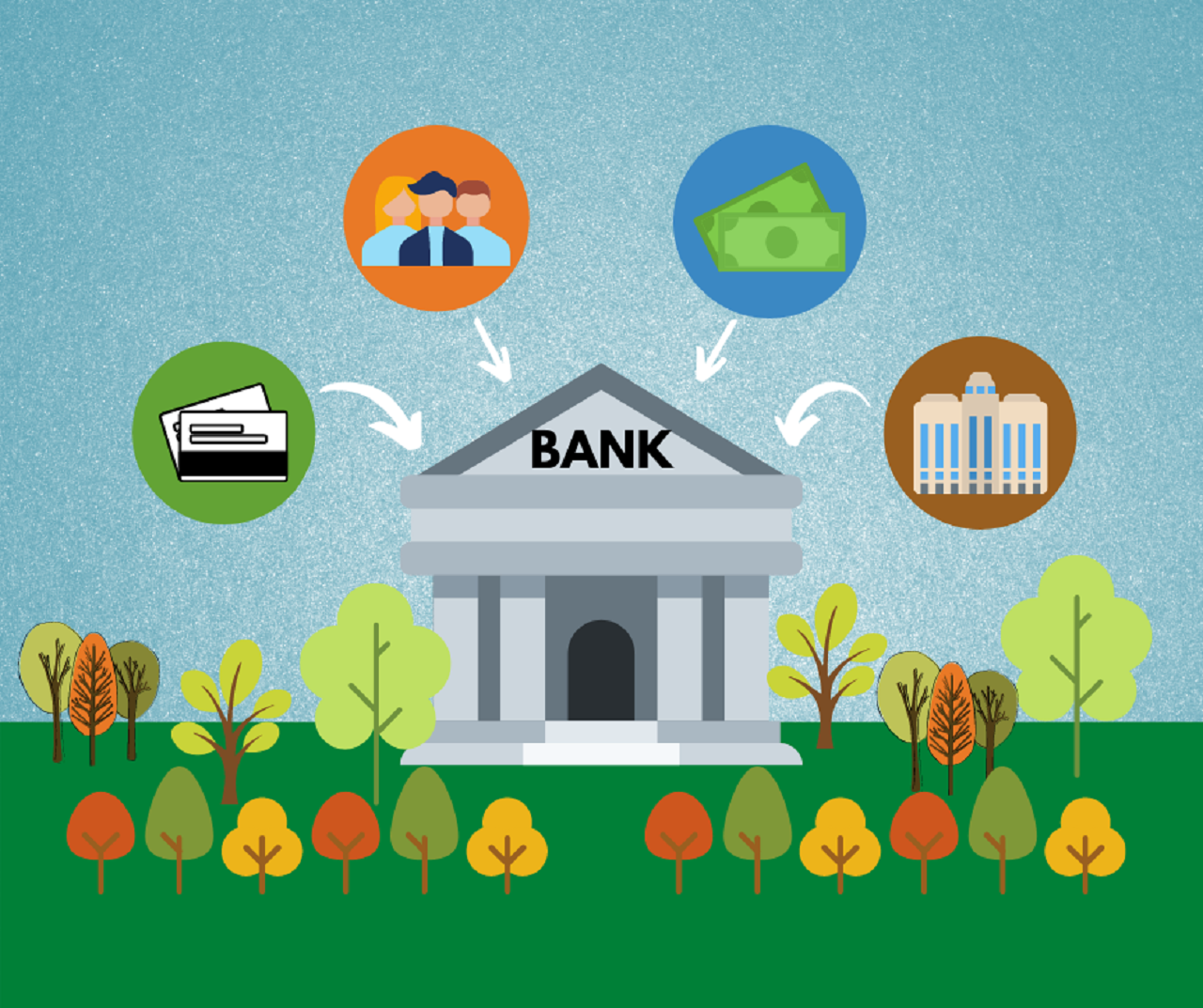The SARFAESI Act came as a part of Banking Reforms with the opening of the Indian economy as per the International Standards. The legislation is enacted to strengthen the banking system. The later reforms before the SARFAESI Act brought the enactment of the Recovery of Debt Due to Bank And Financial Institute Act, 1993 (now Recovery of Debt and Bankruptcy Act, 1993). The law gave power to the creditors/banks to approach before the Debt Recovery Tribunal for faster resolution of recovery disputes.
However, this was far achievable and the system corroded in itself, therefore, the SARFAESI Ordinance, 2002 was brought at the earliest to deal with the plying of the cases before the DRT.
This article will explain all the legal aspects of asset classification and the intention of implementing the Securitization and Asset reconstruction law in India.
Table of Contents
- Why the SARFAESI Act was Implemented?
- What are the Institutions under the SARFAESI Act?
- What is an Asset Reconstruction Company?
- What is the power of the Banks and ARC under SARFAESI Act?
- How Borrowers Can Protect their interest under the SARFAESI Act?
- Borrower’s Objection under Section 13(3A) of the Act
- Application before DRT under Section 17 of the Act
- What actions the DRT can take if the process is found illegal?
- Limitation Period of filing the Appeal
- Protection to the tenant in possession of the secured asset
- Appeal Before Debt Recovery Appellate Tribunal under Section 18
- How Various Judgements influence the Scope of the SARFAESI Act?
- Conclusion
Why the SARFAESI Act was Implemented?
After the liberalization policy adopted by India which opened up the economy for the foreign business to access the Indian markets. The reform was highly supported by the financial sector of the economy which had contributed a lot to the growth.
However, the Indian financial sector was not equipped with the necessary laws as per the International standards, which is defining an asset in general and no legal provisions for securitization and reconstruction of assets of the Banks and Financial Institution.
This resulted in a slow pace of recovery of defaulting loans and a mounting level of non-performing assets in the banking and financial sector. For this, the Central Government pursued banking reforms through the recommendations of the Narasimhan Committee I and II and Andhyarujina Committee which considered changes in the legal system.
These committees recommended the enactment of new legislation for securitization and empowering banks and financial institutions to take possession of the securities and to sell them without the intervention of the Courts.
Acting on the recommendation the Parliament enacted the SARFAESI Act, 2002.
However, the extra-judicial nature of the provisions of the Act was challenged before the Supreme Court in the Mardia Chemicals Limited vs. Union of India [AIR 2004 SC 237] which consequently held the law as constitutionally valid, although it struct out some of the provision of the law which was later corrected through the amending law in Enforcement of Security Interest and Recovery of Debts Laws (Amendment) Act, 2004.
What are the Institutions under the SARFAESI Act?
The SARFAESI Act has created two new institutions through the application of this act. Although, the act originally created the incorporation of asset reconstruction companies previously known as securitization and reconstruction company which was amended by the act of 2016.
The Amending Act of 2016 also added Central Registry under the RBI. As mentioned previously the law is an extension of the Recovery of Debt and Bankruptcy Act, 1993. Therefore, the Debt Recovery Tribunal has also the jurisdiction for adjudicating any dispute under the SARFAESI Act.
The Asset Reconstruction Company (previously known as securitization or reconstruction company and in short ‘ARC’) which are companies incorporated for the securitization and sale of a secured asset from the Banks and helps in the reconstruction of assets on the books of the Bank.
An ARC is registered as per Section 3 of the Act by obtaining a certificate for registration from the RBI. The fund base to register an ARC company it should own funds not less than two crores rupees or such higher amount as the RBI has specified.
The ARC can be a company or a Limited Liability Partnership firm registered with the RBI. The RBI is the regulatory body wherein, all the ARC has to abide by the rules and regulation created by it.
The ARC generally buys secured receipts from the Banks or the Financial Institutions. The ARC comes in the shoes of the lender and takes the recovery action against the borrowers/defaulters. Section 10 all acts done under the SARFAESI Act the ARC is presumed to be the Act done by the Bank or the secured creditor.
The Debt Recovery Tribunal is the institution where the originally a creditor would approach fro the recovery of debts as per the Recovery of Debts and Bankruptcy Act, 1993. The law as per the SARFAESI Act, 2002 wherein, the Borrower gets the right to protect its interest from any illegal issue of possession notice or the auction of the secured asset of the borrower.
The Tribunal is formed as per Section 3 and Section 4 of the Recovery of Debt and Bankruptcy Act, 1993. The power of the Tribunal extends to the SARFAESI Act, 2002. The borrower has the right to file an application under Section 17 of the Act for any action taken by the bank under the Act.
The Tribunal has all the power to scrutinize the actions taken by the secured creditor and if the bank found guilty the whole proceedings can be set aside by the order of the Tribunal.
Similarly, a Debt Recovery Appellate Tribunal is formed as per Section 8 of the RDB Act, 1993. The borrower or the secured creditor or any other party aggrieved by the order of the DRT can file a Second Appeal as per Section 18 of the Act.
The Central Registry is set-up by the Central Government for the registration of any transaction of securitization and reconstruction of financial assets and creation of security interest as per this Act.
The Amendment act of 2016 gave new powers to the Central Registry. The Central Registry is the centralized repository for maintaining all the records of the creation of security interest and the reconstructions of assets.
The Central Registry is regulated by the RBI which formulates the rules and regulation for the appointment of the Central Registrar and the format for reporting the compliance before it.
All the registered Asset Reconstruction Companies and the Secured Creditors have to report all activities of the securitization and reconstruction to the Central Registry. The non-compliance or report to the Central Registry will attract penal action against such ARC or the Secured Creditors.
Also Read: What the Borrower Should Know About the SARFAESI Act 2002?
What is an Asset Reconstruction Company?
The Asset Reconstruction Company has already been explained in the above section of this article. Although this section will explain about the ARC’s in-depth. The Asset Reconstruction Company is registered with the RBI as per Section 3 and direction or circulars for registration in the Master Circular.
The Purpose of an Asset Reconstruction Company
Like any other business, ARC’s are specialized in buying and selling of financial assets of the Banks or financial institutes. The ARC’s generally buy financial assets which are declared as Non-Performing Assets. ARC’s as per Section 5 of the Act will acquire financial assets of a bank or financial institution
- by issuing debenture or bond for a consideration agreed upon with the Bank or the financial institution
- by entering into an agreement with the bank for the transfer of such financial assets and setting the terms and conditions for such transfer.
The ARC after the acquisition of the financial asset comes into the shoes of the Bank or the Financial Institution and all liabilities upon the borrower will be adjusted towards the ARC. Therefore, the liability towards the original lender ceases and the ARC takes its place.
Consequently, any recovery proceeding against borrower filed by the Bank or the financial institution after the transfer of the financial asset to the ARC will result in the all recovery proceeding or suits or application will be continued and enforced by or against the ARC.
What is Asset Reconstruction?
Section 2(b) of the SARFAESI Act defines asset reconstruction means, acquisition by any asset reconstruction company of any right or interest of any bank or financial institution in any financial assistance for the purpose of realization of such financial assistance.
Financial assistance as per Section 2(k) means, any loan or advances granted by the bank to the borrower or any debenture or bonds subscribed in the open market by the bank or the financial institution or any guarantee given or letter of credit established with a contracting party. This will also include any other credit facility extended by the bank or financial institution.
For the purpose of Asset Reconstruction, the ARC can take measures as described in Section 9 of the Act. The following actions ARC for the purpose of asset reconstruction can take or one or more of the measure: –
- the proper management of the business of the borrower or takeover of the management of the business of the borrower;
- the sale or lease of a part or whole of the business of the borrower
- rescheduling of payment of debts payable by the borrower;
- enforcement of security interest in accordance with the provisions of the Act;
- settlement of dues payable by the borrower;
- taking possession of secured assets as per the provision of the Act;
- conversion of any portion of debt into shares of a borrower company.
The Business model of ARC
The Business model of the ARC is conducted by two activities.
- Buying and selling of the financial assets acquired by the Bank or the Financial Institutes
- Issuance of security receipt to the qualified buyers for raising of funds for asset reconstruction projects.
However, the buying and selling of financial assets have already been explained.
The other part of raising funds is through the issuance of security receipts to the qualified buyers. The ARC can issue and raise security receipts as per Section 7 of the SAFAESI Act.
These qualified buyers are like investors subscribing to a scheme laid out by the asset reconstruction company, which from this fund acquire right, title or interest in the financial asset involved for the purpose of reconstruction of assets.
The scheme for offering receipts or raising funds by the qualified buyers will be in the nature of trust managed by the ARC. This means financial asset acquired by the ARC are for the benefit of the qualified buyers.
If the ARC does not value the trust binding between the parties, it will eventually cause non-realisation of the financial asset. For such realisation, the qualified buyers holding security receipts not less than 75 per cent of the value of the security receipts in the scheme can call a meeting of all the qualified buyers and pass such resolution which will be binding on the ARC.
What Is The Power Of The Banks And ARC Under SARFAESI Act?
The Act has given stringent powers to the Banks and the ARC’s to conduct recovery action against the borrower by auctioning the secured asset.
Declaration of NPA
In a Lending Business, a loan or a debt is an asset for the bank because it generates revenue for the Bank. If such an asset is unable to generate revenue then it comes under the category of a failed asset for the Bank and becomes a burden on the Books of the secured creditor.
An NPA or the Non-Performing Asset is a declaration that the loan with the Bank or the secured creditor is not generating interest because of non-payment of the interest amount by the borrower.
Section 2(o) of the Act defines NPA, whereby, in a loan asset, the Borrower has not made repayment for the past 90 days from the last payment of interest, the Bank can declare the asset as NPA.
If a Bank declares an asset as non-performing then, then it issues a notice under Section 13(2) of the Act. Further reading about NPA’s can be understood in this article.
Notice Period under Section 13(2) of the Act
After the declaration of Non-Performing Asset, the Bank sends a notice to the borrower for carrying out the recovery action.
A notice under Section 13(2) is sent to the Borrower, conveying the declaration of the NPA and that a recovery action will be taken against by the sale of the secured asset by the Bank. The Bank mentions all the details about the principal amount and interest amount which is due by the borrower and non-payment of due will attract stringent action.
The notice period is of 60 days assigned to the borrower to place an objection to the claim made by the secured creditor or to discharge the liabilities to the bank as mentioned. The reply to the objection produced by the borrower has to be made within 15 days.
Also Read: Latest Judgments from SARFAESI Act 2002 and IBC
Symbolic Possession under Section 13(4) of SARFAESI Act
The provisions contain the action a secured creditor can proceed with the secured asset of the borrower. This also signifies the symbolic possession of the secured creditor against such secured assets.
The secured creditor using the power of Section 13(4) after the lapse of the 60 days’ time period of the notice will move to take the following measures to recover the debt:
- Take possession of the secured assets of the borrower including the right to transfer by way of lease, assignment or sale for realizing the secured asset;
- Take over the management of the business of the borrower including the right to transfer by way of lease, assignment or sale for realizing the secured asset;
- Appoint any person to manage the secured assets the possession of which has been taken over by the secured creditor;
- Require at any time by notice in writing, any person who has acquired any of the secured assets from the borrower and from whom any money is due or may become due to the borrower, to pay the secured creditor, so much of the money as is sufficient to pay the secured debt.
Section 13(4) is the enabling provision which empowers the Banks or Secured Creditor in repayment of debt. The provision gives the power to auction sale of the secured asset or the takeover of the management of the business of the Secured debtor.
Any action taken by the Secured Creditor does not come under the scrutiny of any court of law unless the borrower approaches the Debt Recovery Tribunal by filing an appeal under Section 17 of the Act which is discussed in the next section of this Article.
Taking Physical Possession of the Secured Asset.
The Secured creditor can take the physical possession of the secured asset for the purpose of enforcement of the provision of the act and repayment of the debt due. The secured creditor will file an affidavit as per Section 14 of the Act before the Chief Metropolitan Magistrate or the District Magistrate of the jurisdiction where the property is situated.
The DM or the CMM will after the execution of the said provision provide to the secured creditor:
- The possession of the asset and documents to the secured creditor.
- Forward such assets and documents to the secured creditor.
How Borrowers Can Protect Their Interest Under The SARFAESI Act?
The intention of the Act is to secure the secured creditor from the default of the debtor. The law has provided exemplary powers to the secured creditor but such powers comes a with catch because of the principles of natural justice as adjudicated under Mardia Chemicals Case.
The law, however, gave extensive powers to the secured creditor but it also gave power to the Borrower to secure its interest and to avoid any illegality on the part of the Secured Creditor as per the provision of the act, extending to the rules framed under this act. The complete analysis is written here.
Borrower’s Objection under Section 13(3A) of the Act
The initial power to the borrower against the claim made by the Secured creditor under the notice issued in Section 13(2) can be challenged by a written objection raised by the Borrower.
This power was not initially included in the act and was added through an amendment Act (30) of 2004. The Borrower, therefore, gets the right to raise written objection against the notice sent under Section 13(2).
The secured creditor after receiving the representation or objection has to communicate within 15 days for reasons for non-acceptance of the representation or objection of the borrower.
Application before DRT under Section 17 of the Act
However, the Borrower aggrieved by any measures referred in Section 13(4) taken by the secured creditor can file the application in a prescribed format before the Debt Recovery Tribunal.
The Borrower has to file the application within 45 days from the date of any measure taken under Section 13(4) of the Act. The application shall mention that the measure taken by the secured creditor is not according to the provision of the Act or the rules made under.
What Actions The DRT Can Take If The Process If Found illegal?
The DRT under Section 17(3) after consideration of the measure taken is not accordance with the provision of the law or rules, then it can order for the restoration of the management of the borrower company or the restoration of the possession of the secured asset to the Borrower.
The DRT can also take the following measure
-
- Declare the recourse to any one or more measures referred to in Section 13(4) by the secured creditor as invalid;
- Restore the possession of secured assets or management of secured assets to the borrower or such other aggrieved person, who has made an application under sub-section (1), as the case may be;
- Pass with such other direction it may consider appropriate and necessary in relation to any of the recourse taken by the secured creditor under Section 13(4).
Limitation Period of filing the Appeal
The Borrower has to file the appeal under Section 17 within 45 days from the date of the receipt of the notice or any measure taken by the secured creditor under Section 13(4) of the Act.
The Borrower has to approach with the Court at the earliest, as the option for condoning the delay is not legally available. As observed in the case of Akshat Commercials Limited case, wherein it was held that the Limitation Act is not applicable to bringing an application before the DRT.
The judgement adjudicated that, section 17(1) of the SARFAESI Act proceeding in the nature of a suit because it is a raising of grievances before the DRT. Also, from Section 17(7) of the Act which gives an overview of adjudication of the proceeding as per the RDB Act. And Section 24 of the RDB Act limits the applicability of the Limitation Act because of the term “as far as may be” in the provision which subjects the provision for further interpretation by the judiciary.
The Court with the above inference also observed that the Act explicitly gave 45 days to the borrower to file the appeal before the DRT and also mandated a time-limited to complete the proceeding within 60 days or 4 months from the filing of the appeal. Thus, the intention of the legislature was clear that it did not extend the right for condonation of delay as in Section 5 of the Limitation Act. If the intention of the legislature was clear then I would have explicitly mentioned it.
Therefore, the statutory limit for 45 days for filing an application under Section 17 before the DRT is fixed.
Protection to the Tenant in Possession of the Secured Asset.
The measure under Section 13(4) gives the right to the secured creditor to auction sale of the secured asset. However, the secured asset is in possession of the tenant or lessee who has no involvement in the recovery action of the secured creditor becomes the sufferer without any cause.
This situation was corrected as adjudicated in the case of ICICI Bank Limited Vs Krishna Kumar & Ors wherein, the controversy for the sale of assets by secured asset was questioned if the possession of the tenant is protected by the State Tenancy law which became a constitutional question.
This lead to a conclusion in the above ICICI Bank case supra adjudicating that the SARFAESI Act is a Central Act and it overrides the protection to the tenant as per the Rajasthan State Tenancy Act.
The effect of the above judgement was enumerated through the amendment Act 44 of 2016 whereby sub-clause (4A) was added to the provisions of Section 17 of the Act.
As per Section 17(4A), the Debt Recovery Tribunal after examining the facts of the case and evidence for the purpose of enforcement of security interest examine the lease or tenancy
- Has expired or stood determined
- Is contrary to section 65A of the Transfer of Property Act, 1882
- Is contrary to terms of the mortgage.
- Is created after the issuance of a notice of default and demand by the Bank under Section 13(2) of the Act
Further, the DRT after satisfaction of the issue raised by the tenant or lessee on the above mention points, the DRT will pass such order as it deems fit in accordance with the provisions of this Act.
Thus, gives an opportunity to the tenant or lessee to produce its representation before the Debt Recovery Tribunal and safeguarding its interest.
Appeal Before Debt Recovery Appellate Tribunal under Section 18
The law has also created an Appellate Authority to maintain a legal binding upon the order passed by the Debt Recovery Tribunal for raising any matter related to the SARFAESI Act.
However, a party aggrieved can file an appeal on the following grounds:
- That the party in proceeding in the Debt Recovery Tribunal does not agree with the order passed by the Tribunal.
- That the Tribunal has not commenced the proceeding within the time prescribed under Section 17(5), may prefer an appeal as per Section 18 read with Section 17(6) of the Act.
Although the applicant has the right to prefer an appeal under Section 18 of the Act. The Appeal has to be filed within 30 days from the date of the receipt of the order of the Debt Recovery Tribunal.
The law restricts from filing any appeal and cannot be entertained unless the borrower has deposited with the Appellate Tribunal 50 per cent of the amount of the debt due from him as claimed by the secured creditor or determined by the Debts Recovery Appellate Tribunal.
Although, the Appellate Tribunal holds the discretion on any reasons to reduce the amount for filing the appeal but not less than 25 per cent of the debt due by the secured creditor.
Also Read: What Is The MSME Sector Means for India’s Growth?
How Various Judgements influence the Scope of the SARFAESI Act?
The law has been hit by constant interpretation and reinterpretation of its applicability on the various subjects from the time it has been implemented. This has been seen through the various judgement of the High Court and the Supreme Court increasing or decreasing the scope of the law. Some of the major judgements which give quit significance to the laws should be known.
Such as in the case of Harikash vs Union of the Gujurat High Court [SCA/146000/2011 dated 12/08/2011] wherein, a Non-Banking Financial Company was not recognized as the financial institute as per the definition of Section 2(m)(iv) of the Act, the Central Government has not notified the NBFC as a financial institute, though it performs the activity of lending.
However, this was eradicated after 13 years of its enactment whereby, the Central Government notified NBFC as a financial institute as per Section 45-I of the Reserve Bank of India ac, 1934. This led to the NBFC to implement recovery actions through the SARFAESI Act.
The Act also extends with the Prohibition of Benami Transactions Act, 1988 in the case of 𝗧𝘂𝗵𝗶𝗻 𝗞𝘂𝗺𝗮𝗿 𝘃𝘀 𝗦𝘁𝗮𝘁𝗲 𝗕𝗮𝗻𝗸 𝗼𝗳 𝗜𝗻𝗱𝗶𝗮, wherein a possession notice under Section 13(2) was issued by the respondent Bank to the Borrower. It was revealed that the Borrower was not the benefactor of the loan account, which was taken by Respondent No.5 (Benamidar) in the case. The Court held that the Benami transaction was valid because, it was taken for the benefit of the person who was in relation to the Borrower as per Section 4 of the Prohibition of Benami Transaction Act, 1988 which saves certain transactions from getting prohibited under the said law.
Conclusion
Thus, the law been an advantage for the Banks and Financial Institutes. The has also regulated the system of reconstruction of assets which helped banks in sizing or reconfiguring their books and difficult times. The though has created a system of checks and balance in recovery action still has not been able to achieve the task it was constituted.The law under SARFAESI Act though brought a different approach by the Banks and financial Institutes still it was withheld of its own lacunas which set for further reforms such as the Insolvency and Bankruptcy Code, 2016.
Dear Reader,
Thank You for reading this article.
If you think this blog post is good and worth reading do share it with your friends and colleagues. You can also send me your suggestions by commenting on this article.
However, if you like to receive Newsletter of our post send us your details by submitting this form below.



5 thoughts on “All About SARFAESI Act: Origin, Institutions, Proceedings & Protection to Borrower”